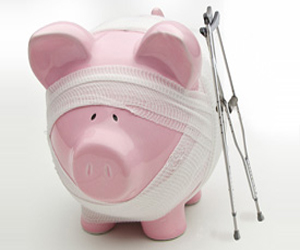Send this article to a friend:
May
29
2025
Send this article to a friend: May |
Trump’s Monetary Reset: Is a Gold-Backed Dollar on the Horizon?
Two powerful catalysts are driving the coming monetary reset. First, the federal debt crisis has reached a breaking point, with skyrocketing interest payments now surpassing defense spending and on track to become the largest single budget item. This trajectory is unsustainable, signaling that a major financial reckoning is imminent. Second, the Trump administration views the US dollar as severely overvalued, believing it is crippling the economy and that urgent intervention is necessary. So, what’s the tried-and-true solution to both of these problems? The answer is clear: a significant dollar devaluation. Devaluing the dollar is a boon to debtors, especially the US government, allowing it to borrow in dollars and repay in dimes. Short of an outright default—which Washington is unlikely to do—a weaker dollar is the only practical way to address the spiraling debt crisis. At the same time, devaluation directly addresses the Trump administration’s concern that the US dollar is dangerously overvalued, a problem they believe is crippling American industry and exports. That’s why a significant dollar devaluation isn’t just possible—I believe it’s a near certainty. The only question is how the Trump administration will do it. And if history is any guide, gold will once again be at the center of it all. Before going further, it’s essential to understand Trump’s stance on gold. It’s no secret that Trump has a deep appreciation for gold—a fact reflected in his buildings, branding, and personal style. From the towering gold letters on his properties to the lavish gold-themed decor of Trump Tower, his affinity for the yellow metal is unmistakable. Trump’s fascination with gold goes back to the 1970s when he made big profits as a gold investor. After the US government legalized private gold ownership in 1975, he aggressively bought in at around $185 per ounce. Reflecting on the investment, he later remarked:
Then, in September 2011, Trump accepted gold bars as a security deposit from a commercial tenant—one of the largest precious metals dealers in the US, APMEX. Instead of cash, the company paid its deposit with three one-kilo gold bars, each 99.99% pure and collectively weighing about 96.5 troy ounces.
In a 2015 GQ interview, Trump openly expressed his admiration for a gold-backed monetary system, stating:
He echoed this sentiment in another interview when asked about the possibility of returning to a gold standard:
Trump’s Treasury Secretary, Scott Bessent, shares a similar enthusiasm for gold. In an interview last November, he made his stance clear:
With both Trump and Bessent signaling a strong interest in gold, the idea of a gold-backed monetary shift is no longer just speculation—it may be part of the broader monetary realignment already in motion. So, how might gold be involved in a monetary reset today? A significant dollar devaluation is likely necessary to address the debt crisis and growing trade imbalances. In previous monetary resets, the solution was straightforward—the US government simply revalued gold at a higher price, effectively devaluing the dollar. However, today’s situation is different. Since 1973, the US government no longer directly sets the price of gold—it now floats freely on the open market. This raises an important question: How could the Trump administration use gold to weaken the dollar today? While no one can say for sure, one potential method would be for the US government to print dollars to buy gold on the open market—driving the price of gold higher and, in turn, devaluing the dollar against it. Remember, Trump has no interest in a minor tweak. He has made it clear that he wants a fundamental and permanent realignment to fix two existential problems: the debt crisis and the overvalued dollar hindering US industry. Given the scale of these challenges, it’s reasonable to expect a materially higher gold price as part of the solution. A gold price of $10,000, $20,000, or even higher is within the realm of possibility. Once this major dollar devaluation is achieved, a logical next step could be re-pegging the dollar to gold to ensure monetary stability and restore global confidence. This is where Fort Knox could become relevant again, as its gold reserves would potentially be used to back a new gold-linked dollar. Pegging the dollar to gold at a much higher price post-devaluation would also drastically reduce the burden of US debt. If gold were revalued to $20,000 per ounce, the 261 million ounces that Washington claims to own would suddenly be worth around $5.2 trillion, significantly strengthening the asset side of the US government’s balance sheet. The exact form this new gold standard might take is uncertain. The government could back 20%, 40%, or more of the money supply with gold or go to a fully gold-backed system, even allowing gold coins to circulate as legal tender, as they did before the 1933 confiscation. When we connect the dots, the big picture emerges.
When you lay out all the facts, it becomes clear that a new monetary reset is likely on the horizon. All signs point to a historic shift: Trump is eyeing a dollar reset, gold is quietly moving into US vaults, and the debt crisis is reaching a breaking point. This isn’t speculation—it’s a playbook that’s been used before. What does it all mean for your money—and how can you turn this shift into opportunity? That’s why I’ve just released an urgent new report revealing the top three strategies you need to prepare—and profit—from what’s coming next. Click here to download it now before the window closes.
|
Send this article to a friend:
 |
 |
 |